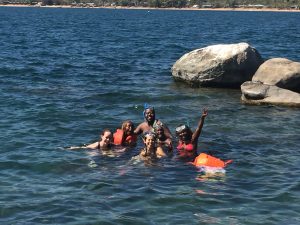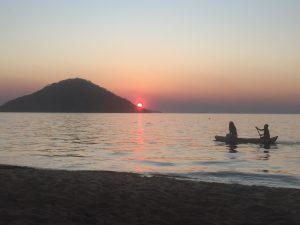Earlier this month, we had the opportunity to visit several hospitals to collect feedback on the PneumaShoe. After visiting Queens, Mulanjie, Thyolo, Chiradzulu, and Zomba and conducting some further research, our team quickly came to the conclusion that the calf, rather than the foot is the best place to target when attempting to prevent blood clots in bedridden patients. Because the major veins of one’s lower extremities are initially supplied by the calf, blood clots tend to originate in the calf before traveling elsewhere, making the calf a more effective target. Additionally, calf compression has been shown to be more hemodynamically effective (this includes measurements of peak velocity, refill time, and cycle volume) than foot compression and is the most widely supported form of IPCDs.
Of course, targeting the calf rather than the foot means that various technical specifications of the device must be altered. This includes the applied pressure, the duty cycle, and the cuffs themselves. While implementing these changes will greatly increase the effectiveness of the device, our team will certainly face some significant engineering challenges carrying out these modifications. However, we have a good grasp on how the device needs to be changed and how those changes should be made. In general, there are 3 major changes that need to take place in order to efficiently switch to calf compression:
- The cuff should undergo the following modifications
- The cuff should be a rectangle that’s 60 x 30 cm
- The airbladder should be a rectangle that’s 30 x 27 cm
- Rather than backpack straps, the cuffs should be secured with Velcro and simple buckles
- The material used to make the cuffs should remain the same
(Current Foot Cuff)
- Rather than an applied pressure of 120 mmHg, the device should achieve an applied pressure of 40 mmHg
- The duty cycle should be altered such that
- The inflation time is slower (5-10 seconds)
- The deflation time is slower (5-10 seconds)
- The cuff stays inflated for a period of time (“hold time” of 5 seconds)
- There’s less time between each cycle
- Both the left and the right cuff inflate and deflate in sync rather than inflating and deflating on alternating cycles
(Current Duty Cycle)
While modifying the cuffs is a relatively straightforward task, modifying the applied pressure and the duty cycle will be slightly trickier tasks. As of right now, there is no way to control how fast the air flows out of the air tank and into the cuffs. Slowing down the inflation and deflation of the cuffs will require intense modification of the software that controls the device. Essentially, because the valve that allows air to be released into the cuffs is controlled by a digital signal, we’ll have to use pulse width modulation to get analog results with digital means.
Additionally, because the right and left cuffs must inflate and deflate in sync, the airflow system must be modified such that air can flow into both cuffs at the same time. This may require using a larger pump so that both air tanks can be filled with air simultaneously. Alternatively, we could modify the airflow stream such that both cuffs are filled with air from the same air tank. However, this may not be ideal, as it requires a larger air tank and an air pump with a higher flowrate.
I’m sure our team will have a great time figuring out the best way to solve these issues in the upcoming weeks!
































